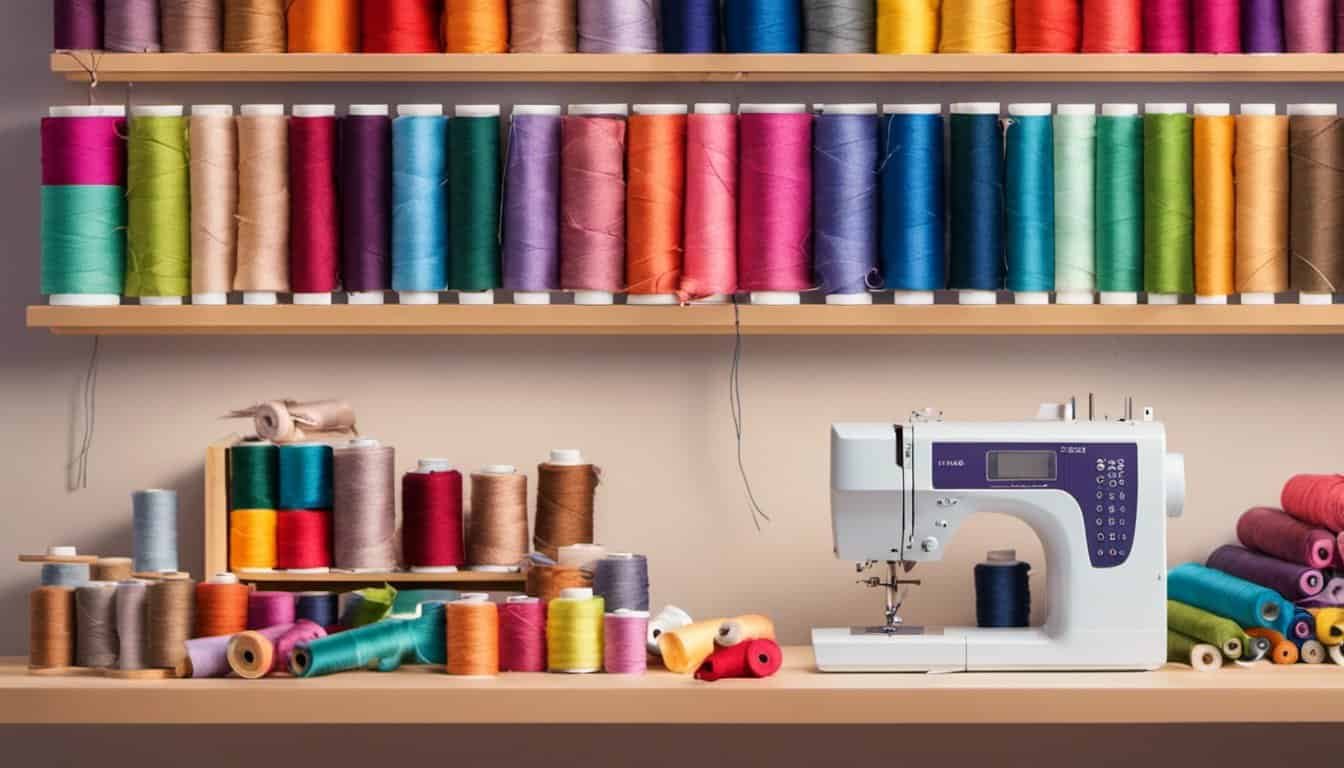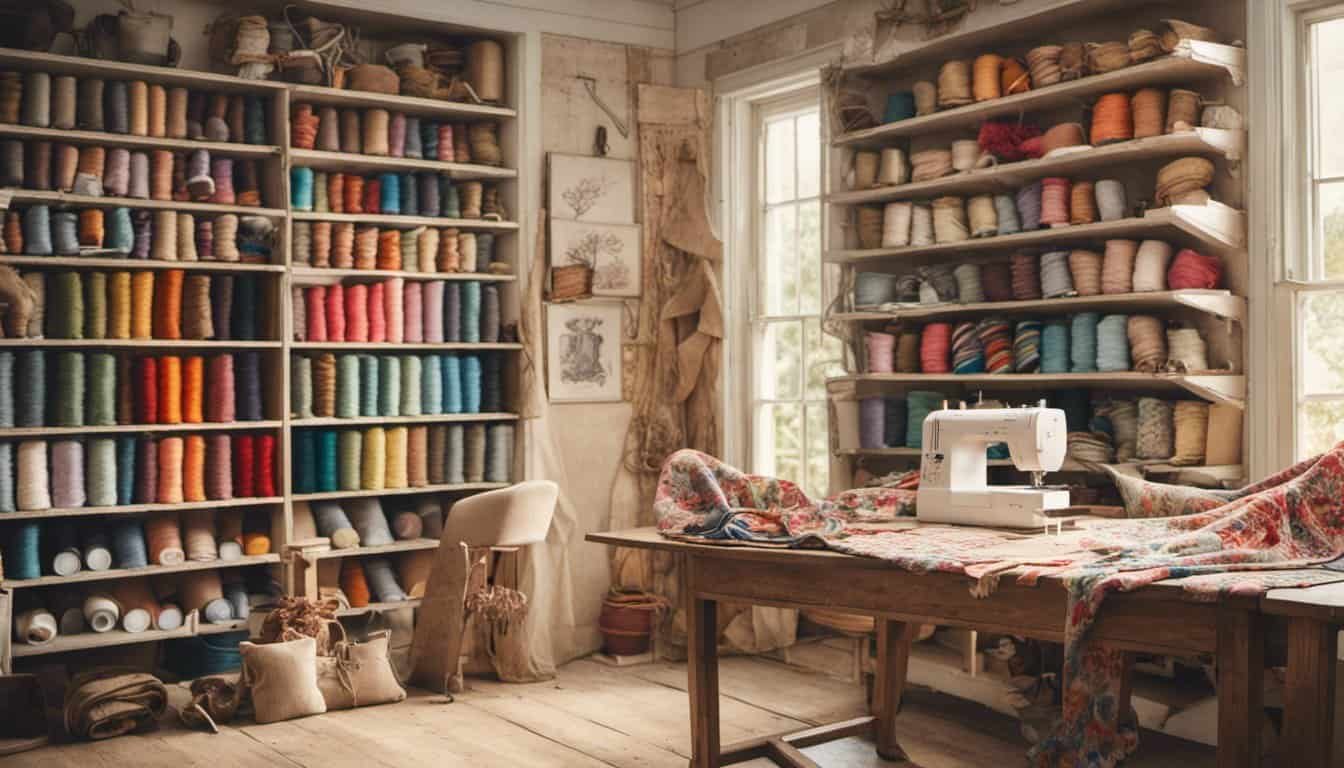There’s something magical about fall—the crisp air, golden leaves, and the perfect excuse to cozy up in warm layers. For me, nothing says autumn quite like a stylish poncho. It’s versatile, comfy, and effortlessly chic, making it a must-have for the season. Instead of searching for the perfect one in stores, why not make your own? Sewing a poncho is easier than you might think, and it’s a fun way to add a personal touch to your wardrobe.
Why Sew Your Own Poncho For Fall Weather
Making a poncho offers complete control over the design, fabric, and fit. Pre-made options often lack uniqueness or proper sizing, but sewing your own ensures a custom piece tailored to your needs.
Choosing your fabric lets you match the texture and warmth to fall weather. For example, wool and fleece provide added insulation for chilly days, while lighter cotton blends suit mild temperatures.
Sewing your own designs ensures a poncho unlike any store-bought version. Adding elements like embroidery, fringe, or custom trims makes it an individualized statement piece.
Creating your poncho can save money compared to purchasing a high-quality item. Fabric and basic sewing supplies often cost significantly less than ready-to-wear options, especially when utilizing sales or repurposing materials.
Learning or practicing sewing skills contributes to long-term benefits. Crafting projects like this can boost confidence and sharpen techniques, which are useful for future projects.
Materials And Tools You’ll Need
Getting the right materials and tools ensures your poncho project turns out both stylish and practical. Let me guide you through fabric choices and essential tools for sewing success.
Fabric Selection Tips
Choose fabric based on warmth, durability, and ease of sewing. For fall, I recommend:
- Wool blends for superior warmth and a cozy feel. They hold their shape well and offer a classic look.
- Fleece for a softer, lightweight option that’s easier to sew and perfect for layering.
- Cotton blends if you prefer a lighter poncho for mild fall days. Look for options with a bit of stretch for better drape.
- Patterned fabrics, like plaids or autumnal prints, to add seasonal charm.
Avoid fabrics that fray excessively unless you’re prepared to line or serge them. Remember, pre-washing the fabric often prevents unwanted shrinkage.
Essential Sewing Tools
Having the right tools simplifies sewing and ensures clean results. Here’s what I rely on:
- Sewing machine with adjustable stitch lengths for smooth seams.
- Fabric scissors for precise cutting without fraying.
- Measuring tape and ruler to ensure the poncho fits as intended.
- Pins or clips to secure layers while sewing.
- Chalk or fabric marker for marking seam lines or cutting guides.
- Iron and ironing board for neat hems and professional finishes.
Keep extra thread in matching colors and a seam ripper handy for quick fixes.
Step-By-Step Guide On How To Sew A Poncho
Creating your own poncho ensures it fits your style and keeps you comfortable during fall. Follow these simple steps to craft a stylish and functional piece.
Taking Measurements And Cutting Fabric
Accurate measurements ensure a well-fitting poncho. I start by measuring from my shoulder to the length I want the poncho to reach, usually mid-thigh or shorter for casual wear. Then, I measure across the widest part of my body to determine the width.
For a basic rectangular poncho, I fold a large piece of fabric in half, ensuring the folded edge will form the neckline. Using chalk, I mark a semicircle or oval at the fold for the neck, keeping the opening comfortable but not too wide. I also cut along the measurements for length and width, keeping lines clean for easier sewing later.

Sewing The Seams
Seams strengthen the edges and improve the fit. After cutting, I pin the fabric along the shoulders or sides, depending on whether I’m sewing a traditional or open poncho style. For a closed poncho, I stitch the pinned edges using a straight stitch, leaving the bottom and neck open.
For an open-front design, I sew only the shoulder seams and leave the sides open. I always backstitch at the start and end to prevent unraveling. If the fabric frays, I finish the seams with either a zigzag stitch or a serger to keep them neat.
Adding Finishing Touches
Finishing details elevate the poncho’s appearance. I hem the edges to give it a polished look, folding them twice and securing with a straight stitch. If you’d like extra flair, consider adding a decorative trim like fringe, tassels, or lace along the hemline.
For the neckline, I either sew a simple bias tape finish or attach a soft ribbed collar for added warmth. Adding a clasp or decorative brooch at the front can add both style and functionality to your poncho.
Style Tips For Your Fall Poncho
Choosing thoughtful design elements personalizes the look of your fall poncho. Adding decorative trims, like fringe or tassels, enhances texture, while contrasting fabrics or bold patterns create a statement piece. Soft floral patterns suit cozy daytime looks, and geometric prints give a modern edge.
« How to Sew a Knit Scarf for Winter: Step-by-Step Guide to Stay Stylish and Cozy
How to Sew a Fabric Bookmark for Readers: Easy DIY Steps for Book Lovers »
Pairing your poncho with the right wardrobe pieces enhances its versatility. Layering it over fitted clothing, like long-sleeve tops or turtlenecks, maintains a polished silhouette. Pair it with slim-fit jeans or leggings to balance the poncho’s flowy design.
Adding accessories ties your outfit together. Belting your poncho creates a defined waistline, ideal for structured looks. Complimenting the fabric tone with matching boots or scarves offers a cohesive style. Neutral-toned ponchos work as versatile bases, while bold-colored options add a pop of seasonal vibrancy.
Adjusting the finishing touches helps adapt your poncho for your lifestyle. Adding a hoodie enhances practicality, especially for brisk fall outings. Front closures, like buttons or zippers, bring functional warmth while maintaining elegance.
Common Mistakes To Avoid When Sewing A Poncho
Choosing The Wrong Fabric
Select the right fabric for fall weather, like wool blends or fleece, to ensure warmth and comfort. Avoid delicate or stiff fabrics, such as silk or heavy canvas, as they can either fray too easily or hinder movement. Using stretchy fabrics without proper stabilization can also lead to uneven seams.
Skipping Measurements
Use accurate measurements for the right fit. Guessing or using standard sizes without adjusting for individual proportions can result in a poncho that’s too tight, too short, or overly large. Measure shoulder width, arm length, and desired length carefully to prevent fitting issues.

Ignoring Fabric Pre-Treatment
Wash and iron all fabrics before cutting to prevent shrinkage later. Skipping this step can cause the finished poncho to change shape after washing. For example, cotton fabrics often shrink by 2-3% if not pre-washed.
Neglecting Seam Finishes
Finish seams properly to prevent fraying over time. For fabrics prone to fraying, like loosely woven materials, use methods like overlocking or zigzag stitching. Unfinished seams can deteriorate quickly, especially with frequent wear.
Rushing The Cutting Process
Cut fabric with precision to achieve neat and symmetrical pieces. Rushing or using tools like blunt scissors can lead to uneven edges, wasting fabric and creating fitting problems. Always use sharp fabric scissors or a rotary cutter for cleaner cuts.
Overlooking Design Details
Plan design elements like necklines or trims before starting. Forgetting to leave space for the neck opening or not laying out trims properly can ruin the aesthetic. Test placements and adjustments before stitching these details.
Sewing Without Pins Or Clips
Secure fabric layers using pins or clips, especially for thicker fabrics like wool. Skipping this step often causes slipping, misaligned seams, or uneven hems. Pinning ensures cleaner lines and less frustration during sewing.

Neglecting Finishing Touches
Pay attention to topstitching and finishing touches for polish. Messy hems or skipped topstitching can make the poncho look unprofessional. For example, press seams and add edge stitching around openings to enhance durability and style.
Not Testing Stitches On Scrap Fabric
Test stitch length and tension settings on scrap fabric before sewing the actual poncho. Skipping tests can lead to skipped stitches or puckering. For thicker fabrics like fleece, adjust the sewing machine settings to prevent pulling.
Avoiding Practice On Basic Shapes
If you’re new to sewing, practice on similar but simpler shapes before tackling the poncho project. Skipping practice often results in uneven hems or poorly joined seams when working on complex designs.
Conclusion
Sewing your own poncho is such a rewarding way to embrace the cozy vibes of fall while showcasing your personal style. It’s a chance to get creative, learn new skills, and craft something that’s uniquely yours. Plus, there’s nothing quite like the satisfaction of wearing something you made with your own hands.
Whether you’re a seasoned sewing enthusiast or just starting out, this project is a fun and practical way to expand your wardrobe. So grab your fabric, gather your tools, and enjoy the process. Your perfect fall poncho is just a few stitches away!


















